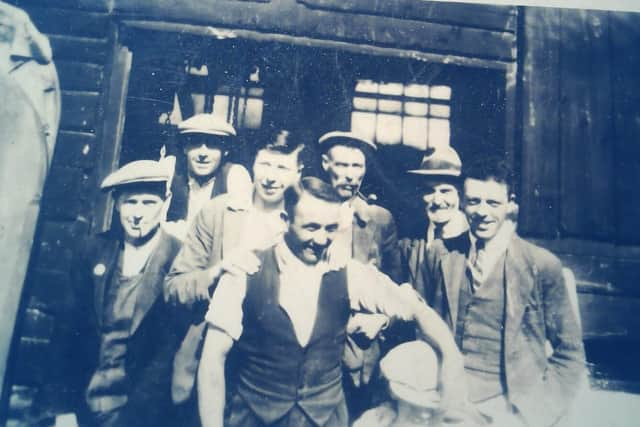Luton History: From stonemason to mayor - the story of Low Giddings
and live on Freeview channel 276
The 1881 census records them living in Melson Street, he is a Mason employing 2 workers.
It wasn't long before Low had to seek larger premises due to his expanding business. Extra workshops opened in the town at Crescent Road, Mill Street, Station Road and conveniently, next door to Rothesay Road Cemetery.
Advertisement
Hide AdAdvertisement
Hide AdThings were not all plain sailing for Mr Giddings, in 1890 while engaged on restoration work at Toddington Church, he fell 17 feet from scaffolding landing on a chair, his injuries were so severe it took him months to recover.


The setback didn't relinquish his urge for success, in 1891, he was elected a member of Luton Town Council the following year a J.P., he was elevated to the dignity of "Alderman" and finally was elected Mayor in 1901 and 1902.
His most prestigious project was achieved in 1907 when appointed to restore the ancient but now crumbling St Mary's Parish Church in Church Street, Luton.
Rev E. R. Mason noticed the serious deteriorating fabric of the building and had to raise £3,000 to fund the project, which admirably he managed to do.
Advertisement
Hide AdAdvertisement
Hide AdThe same year, Low Giddings retired from municipal affairs, for his dedication to the town, and was presented a silver tea service by the corporation and head officials.
With the onset of war looming, and Low nearing retirement, he withdraws from active projects in his business. In 1923, Low Giddings Monumental Masons is converted to a Limited Company, however he remained Chairman. Mr Edmund Algar Jones and Charles Frederick Earle, 2 of his loyal employees are appointed Directors of the company.
While holidaying in Eastbourne and staying at his daughter's Hotel, Low Giddings passes away in 1925 aged 72 Years.
Low Giddings Monumental Masons continued well into the 1960's.
Advertisement
Hide AdAdvertisement
Hide AdThe photo was taken outside the gates of Low Giddings workshop in Rothesay Road about 1920, the guy in the left bottom-hand corner, puffing a woodbine, is my grand father-in- law Benjamin Sidney Gunn, the character in the back row adorning a pot hat puffing his pipe, is possibly his father, another Benjamin Gunn. Records reveal both were employed by Mr Giddings at this time.
The Gunn’s ancestral roots originate from the quaint village of Dinton in Buckinghamshire, the reliable source of work was labouring and silk weaving, but by the 1840's , work became scarce, many moved towards Tring, including the Gunn’s, where silk weaving factories had established due to the exorbitant costs in London to produce silk.
The elder Benjamin Gunn, ventured to Luton seeking work as a Mason around 1880, he settled in High Town with his new wife Kate whom he married in 1883 in Luton.
Thirty years later, Benjamin Gunn the elder, is father to Benjamin Sydney Gunn, the family are now living in New Street, and both are employed with Mr Low Giddings.
Advertisement
Hide AdAdvertisement
Hide AdBenjamin Sydney served in Egypt and Palestine during the First World War, during this time he contracted Malaria and suffered relapses throughout his life. However in 1923, he was appointed ‘Inspector’ by the War Graves Commission to oversee the monumental work undertaken in the Belgium and French Cemeteries dedicated to those who died in the First World War.
In later years, now retired and virtually incapacitated, Benjamin Sydney Gunn never gave up his skills, he continued carving Marble clock cases for Morgan Hussey, master clock makers in Chapel Street.